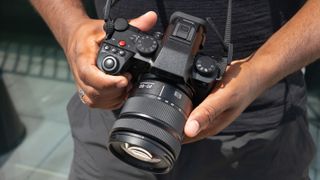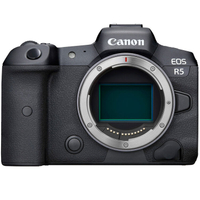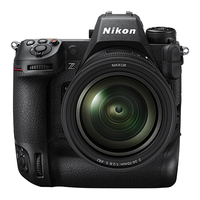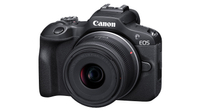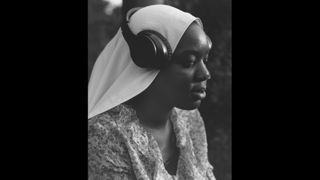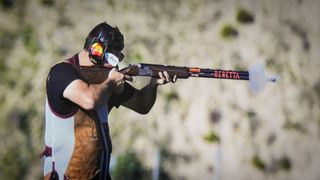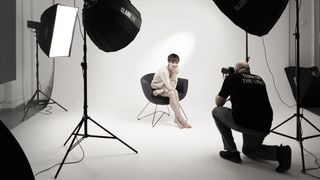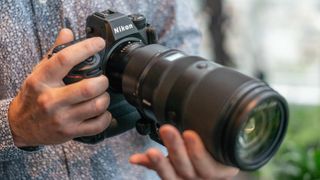
Pre-Black Friday deals
The quick list
1. Best overall
2. Best professional
3. Best affordable
4. Best vlogging
5. Best travel
6. Best filmmaking
7. Best looking
8. Best resolution
9. Best Canon
10. Best Sony
11. Best beginner
FAQs
Mirrorless sensor sizes
How we test
The "best" mirrorless camera can be different things to different people. Obviously it means one thing if I'm looking for a camera to take on vacation, and another if I'm looking for one to shoot a music video. So the best tool for the job really depends on the job – which is why this guide is divided into different use cases.
For my money, the best mirrorless camera overall is probably the Canon EOS R7 – an APS-C powerhouse with all the punch of a full-frame camera, combined with all the advantages of a cropped sensor. Again it has particular pros and cons depending on what you use it for, but it's the most adaptable camera on this list in the overlapping Venn diagram of price, performance and portability.
My advice is to work out what you actually need from your camera, and then click on the relevant link over to your left. Want something with loads of resolution? Something for vlogging? Something for beginners? These recommendations are pitched accordingly.
I'm lucky enough to have played with every camera on this list, and the DCW team has reviewed and lab-tested each one according to its specialism, so you can be sure that you're being recommended the best mirrorless camera for you.
Pre-Black Friday deals
The best Black Friday camera deals are already here, including for some of my recommendations in this guide. Here are some of the best offers available right now, in the US and UK regions:
🇺🇸 US DEALS
Load more US and UK deals ↴
🇬🇧
The quick list

Don't get swayed by thinking you need a full-frame sensor! The R7 packs pro-level performance, combining speed, stabilization and resolution with all the benefits of a smaller sensor – like an amplified focal range, perfect for genres like wildlife.

If you're a pro, look no further: the Z9 is the best tool you can find. Made for professionals who demand the absolute best from their cameras, this will please both photographers and filmmakers alike with its all-around hybrid prowess.
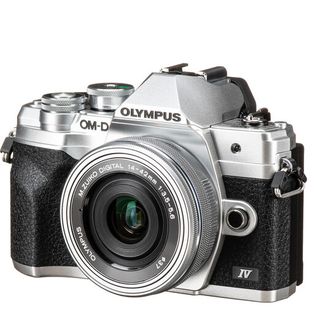
The E-M10 series has always been designed for value, but this Mark IV version adds power and sophistication too, with a 20MP sensor, improved in-body image stabilization, and a new flip-down and monitor that tilts 180° for selfies.
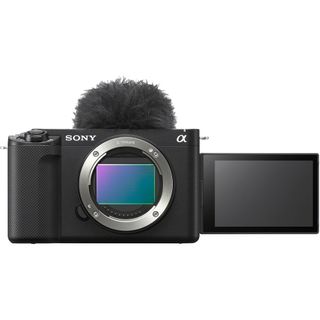
The Sony ZV-E1 is the best camera you can currently buy for vlogging or even some movie-making. With a full-frame sensor, in-body image stabilization, and Sony's S-Cinetone and S-Log3. This is a powerful yet compact video machine.

The X-S20 doesn't have the external exposure controls of the higher-level X cameras, but that arguably makes it better suited to run-and-gun vacation vlogging and shooting. Build quality and handling are great, and there's bags of power to boot.

Panasonic has always had one of the best reputations around when it comes to video, and the Lumix S5 IIX steps this up a notch with the debut of phase detection autofocus as well as pro-level in-camera recording, including ProRes RAW.
Load the next 6 products ↴

Modern design is great and all, but you can't beat a classic – and the Nikon Z fc is designed like a classic film SLR of yesteryear. It's not yesterday's tech inside the body, though, with powerful performance that's on par with the retro aesthetic.

Want the maximum resolution available? Look no further than the Fujifilm GFX 100S with its 102MP sensor, for seriously large images. It's not just resolution, though; it also has in-body image stabilization, 4K video and impressive autofocus.

Other cameras have caught up in some departments, but the R5 is still an almost unbeatable Swiss Army Knife of a camera: 45MP stills, 8K video, best AF in the business, 8 stops of in-body image stabilization… Canon made a monster. And I love it.
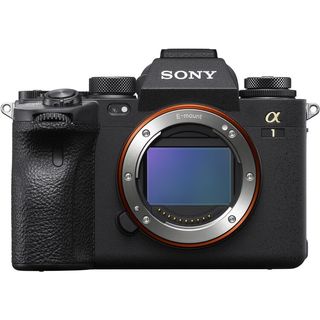
Offering almost every top spec that Sony could fit into a camera, this is the 50MP, 8K, 30fps body you can turn to for literally any occasion – but it comes with an enormous price tag to match. If you can afford it, though, it won't let you down!

If you, or anyone you know, is just starting photography, this is the camera to get. Simple to use (it actually shows you how to use it!) yet packing a huge plenty of power ready to be unlocked, the R100 is an exceptional camera for beginners.
The best mirrorless cameras in 2023
Why you can trust Digital Camera World Our expert reviewers spend hours testing and comparing products and services so you can choose the best for you. Find out how we test.
Best overall
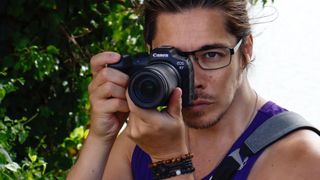
The R7 is the mirrorless replacement for three of the most popular DSLRs that Canon ever made: the EOS 90D, EOS 7D and EOS 80D. However, more than just doing the same thing but without a mirror, Canon has turned these speed-focused wildlife specialists into an all-purpose performer that can handle anything you throw at it.
Of course, the Canon EOS R7 still retains its pedigree when it comes to wildlife, sports and action. Its blistering 30fps maximum shooting speed is on par with the flagship Canon EOS R3, and the 1.6x crop factor means that the effective focal length of your lenses is extended. My creaky old EF 75-300mm lens becomes a whopping 120-480mm on this camera! It also boasts the same bleeding-edge autofocus system found in the flagship camera, which I called a cheat code for wildlife photography.
On top of that, though, the R7 does everything you could ask of it. Unlike most APS-C cameras, it doesn't compromise on resolution thanks to its 32.5MP sensor. When I want to shoot video, I'm getting glorious 4K (which has been oversampled from 7K) with dedicated headphone and microphone jacks. There's twin card slots, so you don't have to worry about corrupted data, and the in-body image stabilization is good for up to 8 stops. If anyone scoffs at an APS-C camera being top of this list, they've clearly never used this camera.
Read my full Canon EOS R7 review for more details.
Best professional
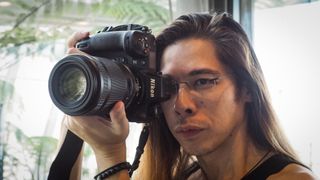
Some say that Nikon was late to the party with its pro mirrorless camera. The moment I used it, though, I knew that Nikon hadn't been tardy: it had been canny. This is the most top-to-bottom capable mirrorless camera on the market right now.
The 8K is as good as anything I've experienced from the Sony or Canon, particularly its market-first 8K 60p. I was skeptical when I saw that Nikon had ditched the mechanical shutter but, with a blinding 120fps continuous shooting and a max shutter speed of 1/32,000, the Z9 simply stands in a league of its own. (Yes, admittedly those 120 frames are only 11MB JPEGs, but it's still hugely impressive).
The autofocus is a few steps behind Canon's, and even Sony's, but the deep learning-powered system is still truly incredible whether you're shooting people, animals, planes, trains or automobiles. The stabilization is rock-solid, it's as rugged as they come… the only thing I don't like is Nikon's counter-intuitive mounting and ring directions!
The Z9 comes in quite a bit cheaper than both the Sony A1 and the Canon EOS R3 flagships, and it has a lot of advanced features. However, if you want the same features for even less money (and an even smaller body), the Nikon Z8 has identical specs with a lower price tag.
Read my full Nikon Z9 review for more details
Best affordable
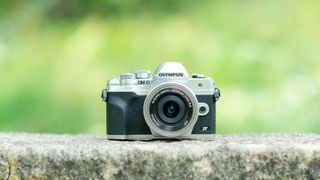
I liked the E-M10 so much that I bought my partner one for her birthday. If that's not putting my money where my mouth is, I don't know what is! In addition to being one of the prettiest cameras on this list, the E-M10 Mark IV is also the smallest – making it perfect for travel and street photography, and an ideal holiday camera. And just because it's the most affordable, doesn't mean it skimps on features.
With a guided user interface, it's an exceptional camera for beginner and intermediate photographers eager to unlock new skills. It boasts super-sturdy in-body image stabilization, along with 4K video and a responsive touchscreen that flips down 180° – ideal for selfies and walkabout vlogging.
The small Micro Four Thirds sensor is even more compact than APS-C, giving two big benefits: the lenses, not just the body, are much smaller, making this a genuine take-anywhere system. And the 2x crop factor means that your 300mm lens instantly becomes a 600mm – great if you want to shoot faraway subjects! There are trade-offs with a smaller sensor, but honestly they're nothing that good camera craft can't compensate for. This is a brilliant all-round performer at a brilliant price.
Read our full Olympus OM-D E-M10 Mark IV review for more details
Best vlogging

If you're confused by Sony's overwhelming ZV line of cameras, you're not alone – I am too! But I can safely say that, right now, the ZV-E1 is the best vlogging body you can buy.
It's small, compact and lightweight, while packing in some incredible features like an image-stabilized full frame sensor, and subject recognition and auto tracking that comes straight out of the Sony A7R V. The camera is also incredibly simple and intuitive to use, so is perfect for anyone wanting professional looking footage without knowing a lot about cameras.
Video footage is excellent, sharp, clear, and with good color direct from the camera. While the stills are of very high quality, they are obviously limited by the 12MP sensor – and pretty much a second thought for a vlogging camera, so this isn't the end of the world. While I still rank Canon's AF more highly for stills, Sony's latest autofocus tracking is a sight to behold when it comes to video, especially for human subjects. It is incredibly fast and accurate, with its AI powers meaning you don’t have to worry about focus and can think about other aspects of filming.
Read our full Sony ZV-E1 review for more details.
Best travel
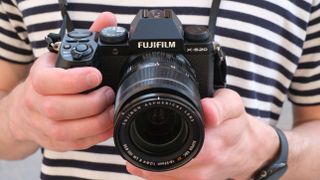
Some vacations require the take-anywhere convenience of a waterproof camera that can go to the beach, but when you need to take image quality on a world tour then it's hard to beat the X-S20's combination of size, speed, versatility and features. Not to mention its looks! Maybe I'm being vain, but if you're on vacation then the chances are that you're going to be appearing in some holiday snaps – so you'll be grateful to have a timeless, chic-looking camera around your neck.
A fantastic hybrid camera, the X-S20 offers a seamless shooting experience from stills through to video, for users of all levels, with its intuitive and straightforward designed controls and compact and portable form factor making it convenient to carry everywhere. But portability doesn't come at the expense of power.
As well as stunning 26.1MP images, the X-S20 enables you to record high-quality 6K videos – in open gate, no less, meaning you get the full height and width of the sensor instead of the baked-in 16:9 that most cameras record in – with professional-level output and RAW codes. Fujifilm's autofocus still trails its rivals, for my money, but it's still very, very good – and unless you're planning to shoot sports, more than enough to cover your vacation!
Read our full Fujifilm X-S20 review for more details.
Best filmmaking
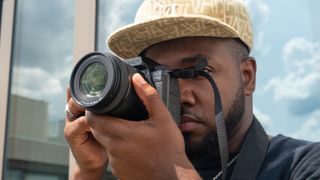
I've always found it hard to recommend Panasonic cameras due to their clunky contrast-detection AF systems, but that all changed with the S5 IIX! It sees the debut of the phase detect technology that Lumix cameras have long needed – and I'm so happy to be able to say that it rockets this camera to the front of the class for video.
There's a lot of competition in this category, and while the regular Lumix S5 II may be the best overall value camera at this price point, the S5II X opens up some great use cases for solo filmmakers at a relatively small bump in price. What’s most impressive here is that the S5II X doesn’t compromise S5II features to add extra video functionality, in fact, it added some features straight out of the box, including better AF and Live View Composite mode that only came to the S5II via firmware update.
If you’re a creator or a filmmaker who needs a top-tier hybrid camera that’s compact and can produce content that slips into professional workflows, without compromising on image quality, the S5II X makes a compelling case for itself. Even if RAW video capabilities weren’t an immediate interest of mine, ALL-I compression, the ability to shoot directly to SSDs and streaming functionality would have been enough to tip the balance in its favor over its stablemate and the competition.
Read our full Panasonic Lumix S5 IIX review for more details.
Best looking
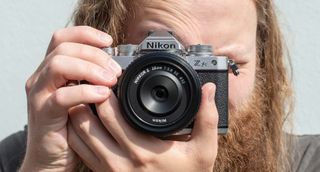
Hot take: not only do I think the Z fc is better looking than the full frame Nikon Zf, I also think it's better looking than the best Fujifilm cameras. (Though, if it was still in production, I'd recommend the Olympus PEN-F as the best looker of them all!)
Why does it matter, though? Well, I hate the saying "style over substance" because style is substance – especially in a visual medium like photography. So I take great pride in the look of my camera, and there's nothing wrong with that. Apart from anything else, when I look at this camera (just like when I look at my old film cameras) it inspires me to shoot. It makes me want to go out and create. And what better feature could a camera have than that?
Well, if you want more, the Z fc has plenty of other features. It boasts a fully articulating touchscreen (Nikon's first on a Z camera) that's ideal for shooting at privileged angles or recording in 4K 30p. The APS-C sensor is only 20.9MP but the files are dropping with detail, and the whole package is wonderfully compact and lightweight. My only real quibble is that there's a real lack of beautifully-designed retro lenses to pair with it right now.
Read our full Nikon Z fc review for more details.
Best resolution

If packing pixels is what's important to you, then the GFX 100S and its 102MP image sensor is my top recommendation. If I'm being honest, I prefer the color rendition (and the design) of the 100MP Hasselblad X2D – but in every other respect, the GFX 100S has it outclassed.
It's smaller and lighter than any other 100MP medium format camera, it’s also far cheaper – and that makes it a lot more accessible. The GFX 100S isn’t perfect – its autofocus performance may not suit every shooting scenario, and its image stabilization doesn’t quite match what it says on the tin – but its shortcomings are trumped by the sheer image quality you get from this camera. With excellent dynamic range, tonality and color depth, sensational resolution and the ability to crop as much as you need and print as large as you want, this camera is worth the investment for anyone who’s after a versatile medium format body.
While the Fujifilm GFX 100 II has now hit the market, and technically outclasses it in a number of areas, in terms of bang for buck I still recommend the 100S – which is the subject of some great savings, now that its big brother has been released.
Read our full Fujifilm GFX 100S review for more details.
Best Canon

When someone who reviews cameras for a living buys a camera, you should probably pay attention. I was so blown away by the R5 after playing with the prototype that I dropped three-and-a-half grand on launch day – and I haven't regretted it for a second. I honestly think it's Canon's finest product ever.
I said it in my comments about the EOS R7 above, and I'll say it again here: Canon's Dual Pixel CMOS Autofocus II system isn't just the best in the industry, it's nothing short of a cheat code. And when it comes to image stabilization on full frame cameras, I don't think it gets better than this – it's leagues ahead of Sony, and bested only by crop sensor systems that only have to stabilize smaller sensors.
The R5's 45MP sensor delivers jaw-dropping stills, and is also capable of 8K 30p video – and a great hack is that you can film something in 8K, then extract a 35MP still image that's absolutely pin-sharp. Ideal for hybrid shooters covering things like weddings who want two bites of the cherry. Oh, and did I mention it can shoot 400MP photographs?
The 8K does, of course, have some well-publicized limitations. And the overheating restrictions extend to 4K HQ, meaning that this isn't an ideal camera if video is your primary field. But I'll be straight with you – aside from review purposes where I torture tested it, I've never actually made this camera overheat in personal use. I can't give it a higher endorsement than the fact that I bought one with my own money – and three years on, I have zero plans to sell it.
Read my full Canon EOS R5 review for more details.
Best Sony

The Sony A1 is everything that Sony says it is. It’s a technological triumph, a camera that really can do everything. Previously, cameras might offer speed, resolution, or video capability, but the A1 offers all three – and even beats dedicated sports and video cameras at their own game.
It has a lot in common with the Nikon Z8 and Z9; a high-resolution sensor (50MP), 8K video (up to 30p), blistering burst speeds (30fps)… but one thing it doesn't have in common is the price. And that remains a major obstacle, as does its appeal being limited to shooters who need everything it does, not just one or two of those things, in order to justify the price. I was recently on a job with someone using an A1, and after I told him how much I liked the camera he replied, "Yeah, but I don't use half of it. I don't think it was worth the money."
Still, for sheer firepower on all fronts, the A1 can't be beat. In fact, it's so powerful that Sony practically killed two of its other cameras by making this one! The Sony A9 II is a terrific sports camera that's eclipsed by the A1, while the Sony A7S III's excellent 4K video pales against the A1's 8K capture. If you want it all, and can afford it, this camera is pretty much future-proof.
Read our full Sony A1 review for more details.
Best beginner
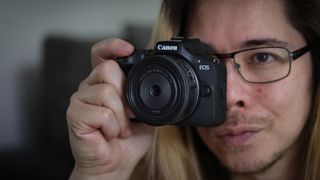
A cheap DSLR may be more affordable, but I've always said that a mirrorless camera is the best way for someone to learn photography – and thanks to the EOS R100, now we have a camera that ticks both boxes. This is an affordable camera and a great entry point into Canon's incredible EOS R ecosystem, boasting some truly incredible lenses and technology, meaning that your kit can grow with you as your skills develop.
The R100 is fantastic for beginners because, like all mirrorless cameras, what you see in the viewfinder (or the back screen) is literally how your photos will look – unlike DSLRs, where you had to check the back of the camera after every shot to see if your exposure was right. The EOS R100 shows you exactly how adjusting things like aperture and shutter speed affects your image, doing a great job of teaching you the principles of photography.
The camera also has a guided user interface, helping you unlock skills and showing you how to achieve creative effects like blurred backgrounds and arrested motion. And none of it comes at the expense of quality, with a potent 24.1MP sensor that delivers results on par with far more advanced and expensive cameras.
At this price you will, however, need to make do with a fixed screen without touch control, as well as 4K that is cropped and loses the brilliant AF system found in stills shooting. But as a beginner body, designed to help you develop your photographic skills, those things really aren't important here. I've taken shots with this camera that are so good, I use them in my professional portfolio!
Read my full Canon EOS R100 review for more details
FAQs
Are mirrorless cameras worth it?
In short, yes! Once upon a time, the price disparity between DSLRs and mirrorless cameras could be a real deal-breaker. Today, however, mirrorless technology is now "the norm", and thus much more affordable. Yes you can get a DSLR for less money, but unless you have a true need for one then it's false economy; DSLR development has all but ceased (Pentax is the only company still producing new models) while mirrorless is the new standard.
Take a look at our DSLR vs mirrorless cameras guide to see what all the differences are.
Which mirrorless camera has the best image quality?
This is a highly subjective question, so your mileage may vary. However, Canon is generally regarded to have the best "color science" of all manufacturers, with the most lifelike and pleasing rendition of natural hues and particularly skin tones. (By contrast, Sony is often criticized for having undesirable colors that need correcting in post-processing.)
In truth, every mirrorless camera from the major manufacturers has fantastic image quality these days. However, if you want the absolute tippy-top quality, I would point you towards the Hasselblad X2D – which I believe has the best color science in the business.

Does sensor size matter?
Yes, sensor size matters depending on how you shoot, what you're shooting, and why you're shooting it. Sometimes a smaller sensor is better, as it affords smaller cameras and lenses and the image stabilization is better. Other times, though, a larger sensor is better, in terms of things like resolution and low light performance. Here's a quick rundown, from smallest to largest:
Micro Four Thirds is the smallest sensor format, but the image quality is surprisingly close to that of bulkier APS-C cameras. These cameras are small, powerful, and affordable. Their crop factor increases depth of field along with the effective focal length of your lenses by 2x.
APS-C cameras provide a good balance between quality and price, with a sensor roughly twice the size of Micro Four Thirds cameras. The crop factor again increases depth of field and the effective length of your glass, but only by 1.5x (or 1.6x for Canon APS-C cameras).
Full frame mirrorless cameras have sensors the same size as 35mm film negatives, and about twice the size of APS-C. This gives them better quality, due to each pixel being larger (and able to gather more light, with less noise), and they can also possess much greater resolution. The trade-off is that they are also bigger and more expensive.
Medium format cameras have sensors even larger than those in full frame cameras, but carry a price tag to reflect that. They boast supreme image quality, but are much larger and slower – both in terms of their physical handling, as well as when it comes to things like continuous shooting speeds.
How we test cameras
We test camera resolution, dynamic range, and noise under scientifically controlled conditions using two key testing tools: Imatest Master and DxO Analyzer. All DSLRs and mirrorless cameras are subjected to these tests and, in some instances, high-end compact cameras.
We use these real-world testing and lab results to inform our comments in buying guides.
1. Resolution (ISO-12233): We use a resolution chart based on ISO-12233 from Applied Image inc to indicate the limit of the camera’s vertical resolution at the centre of the frame. The higher the value, the better the detail resolution.
2. Dynamic range (DxO Analyzer): This is a measure of a camera’s ability to capture detail in the highlights and shadows. We use DxO’s transmissive chart, which enables us to test a dynamic range of 13.3 stops.
3. Noise (DxO Analyzer): We use the dynamic range transmissive chart to analyze the signal-to-noise ratio for RAW and JPG files at every sensitivity setting using DxO Analyzer. A higher value means the signal is cleaner.
